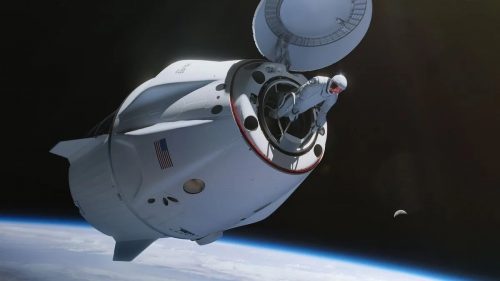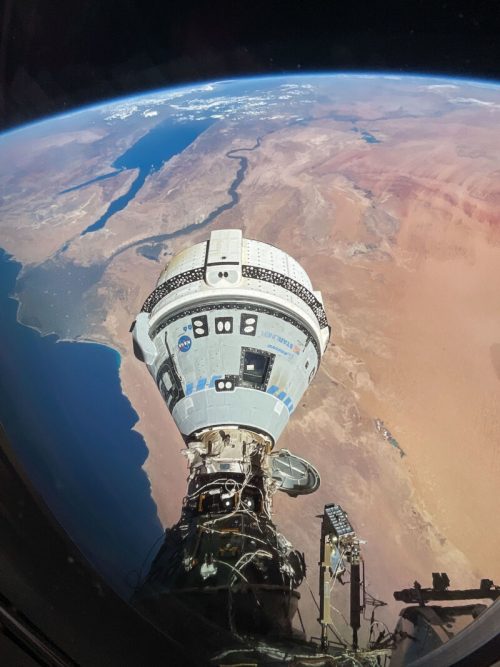Somebody finally says what our colonies in space would look like (although, to be fair, there are so many distopian science fiction novels that have repeatedly said it): they would be slave compounds, or at their most charitable, company towns.
A million inhabitants live in the city under the soft pink sky of Mars, just a century after the first robotic probes from Earth visited the Red Planet. They farm and labor in habitats that shield them from dust and harsh ultraviolet radiation.
Promoted as a society unshackled from earthly laws, this town is in fact as unfree as possible. The company rules everything, owning not only the buildings but the water and air people need to survive. If a person took out a loan to pay for passage, the company effectively holds them in indentured servitude. Human rights are not a given, nor is bodily autonomy.
Matthew Francis makes that bold prediction in Scientific American. He goes on to say, though, that
Thankfully, this dystopia isn’t inevitable.
It isn’t? How does one plan to trick people into living in a brutally unsurvivable environment that lacks any appeal or relief from drudgery short of economic compulsion? I’m going to disagree. I think the entire plan is deadly, built entirely on corpses and bloody backs in the long run, and I see no other alternative. I would love to hear about this alternative plan that isn’t a product of capitalist exploitation. Instead, we get the familiar refrain naming the usual obscenely rich people scheming to take advantage of those less powerful.
However, some of the world’s most powerful men believe it’s part of humanity’s multiplanetary future, and as leaders of the private space industry they have the potential to realize much of the vision. For years, SpaceX chief Elon Musk has pushed claims that he will resettle a million people on Mars by 2050 using a thousand rockets built by his company, with the first settlers arriving by the end of this decade. Even sooner, Amazon founder Jeff Bezos’s Blue Origin rocket company is plotting to build an “office park” in low-Earth orbit in the next five years called the Orbital Reef. His ultimate vision, however, is trillions of people in space colony canisters, to produce “1,000 Mozarts and 1,000 Einsteins,” in his questionable phrasing, in coming centuries.
The only good news about space colonies designed by Elon Musk and Jeff Bezos is that they aren’t going to happen. Musk will not be launching a million people to Mars in 15 years, not even close (although I do see some fantasy synergy between Musk and Trump’s plan to deport millions of people on day one of his presidency — maybe he’s dreaming of filling his Martian city with Puerto Ricans, Haitians, and South American gang-bangers). Bezos is not going to build an office park in Earth orbit, not as long as he can bulldoze farm land for cheap and assemble giant concrete boxes here on Earth. Those are two professional liars. Don’t believe anything they promise, because all they really promise is controlling you to their benefit.
All you need to do to see their true vision of the future is look at what Musk does in the present. He’s a control freak. He’s building a compound in Austin, Texas. It’s creepy and controlling, and just the idea of building a “compound” for your family reeks of Mormon cultishness and Saudi dictatorships.
On a quiet, leafy street of multimillion-dollar properties, one stands out: a 14,400-square-foot mansion that looks like a villa plucked from the hills of Tuscany and transplanted to Austin, Texas.
This is where Elon Musk, 53, the world’s richest man and perhaps the most important campaign backer of former President Donald J. Trump, has been trying to establish the cornerstone of an unusual family compound, according to four people familiar with his plans.
Mr. Musk has told people close to him in recent months that he envisions his children (of which there are at least 11) and two of their three mothers occupying adjoining properties. That way, his younger children could be a part of one another’s lives, and Mr. Musk could schedule time among them.
He’s got lots of money, he could afford to give his wives and children complete freedom and the ability to be autonomous agents of their own will, but no — he wants them conveniently close to do his bidding. Do you really think his Martian workers would be allowed any kind of independence? If they whispered the word “union” he’d shut off their air. Musk is very concerned about birth rates, too. Workers would not only have quotas of profitable units produced, but would have quotas of children to pump out. Having a self-perpetuating labor force totally under his control is the main virtue of a Mars colony to him. The only pronoun he values is the possessive pronoun that he’d apply to children, workers, and women.
Francis has it right.
To put it bluntly: if our space overlords behave this way on Earth with governments looking over their shoulders, how will they behave off-world with little possibility of oversight or redress? Even returning to Earth from Mars might be technically impossible. Trusting your life to private space companies is a big gamble, not least since Florida Governor Ron DeSantis in May signed a bill shielding SpaceX and other companies from liability from death or injury incurred from spaceflight.
If you want a glimpse of the real future of space colonization, read this story about how Saudi princes control their own daughters. It’s got compounds. The few things it has that a Mars colony wouldn’t is gilded cages and shopping trips to Dubai (under armed guard, of course). That’s the fate of any people who find themselves at the mercy of wealthy, grasping autocrats, like Musk or Bezos.
We should not even be considering space colonization — take it right off the table.
Musk and Bezos don’t serve a fascist regime, but like von Braun, their visions are rooted in 20th-century colonialism, resource extraction and disregard for labor rights. Martian company towns off-world won’t be the libertarian paradise promised by our tech billionaires.
Space exploration, yes; space exploitation, no. It should not be in the hands of billionaires, who we have learned, are the worst people on the planet.












